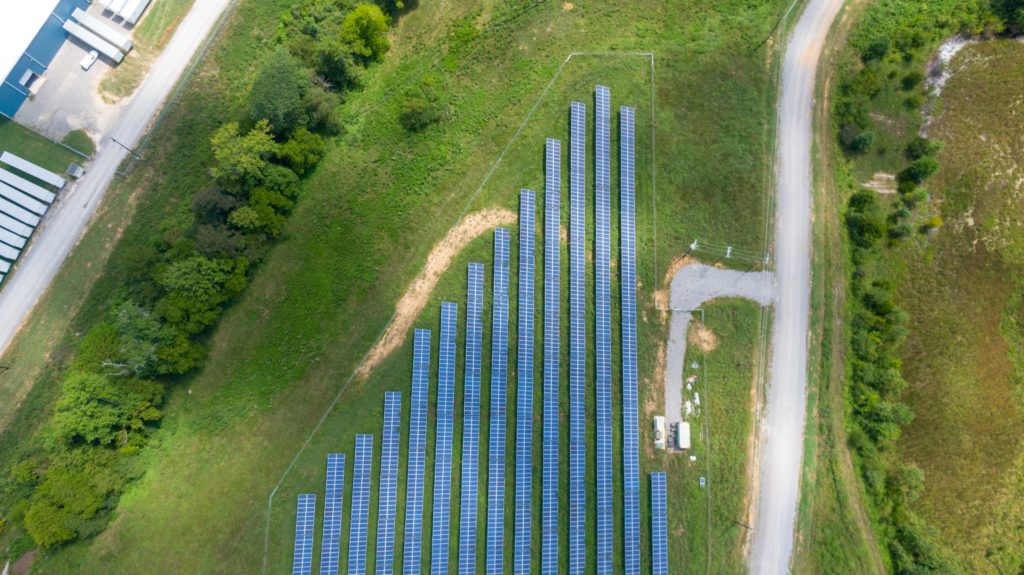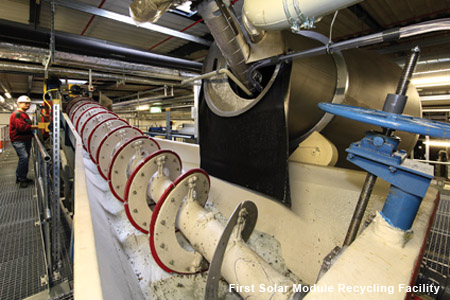
This isn’t a question of the sustainability of the power source, ie., the sun. Obviously, there’s no concerns there. But the sun’s radiative energy doesn’t spontaneously provide power to switch on the lights, it requires some pretty specific, technical hardware. And one thing we all understand, is that anything we humans produce has a usage expiration date. (Actually, particularly in the case of electronics we’re now very familiar with the term planned obsolescence. I’m looking at you Apple).
Usually stories of the limited lifespan of renewable energy infrastructure would come from some climate denier’s mouth or a website funded by deep fossil fuel pockets. But those in the climate action space are fast learning that to combat myths and mistruths we must be on the front foot and acknowledge that we don’t have perfect solutions. Yet.

Solar panels aren’t new. But they’ve only been in use for large scale commercial supply of electricity for just over 2 decades. With the lifespan of most solar (PV) cells being in the region of 25-35 years, we’re only now approaching retirement age of the original large scale installations. Up to this time, we’ve only really had to deal with systems going out of service due to storm damage, small general faults/failure, or the owner wishing to install an upgraded version (to achieve higher system efficiency). With increasing number of installed systems, of course we will also see an increase in decommissioned systems. So what happens to them at the end of their life? To answer that, we must consider the materials they’re produced from. This commonly includes aluminum, polymers or plastic, glass, silicon, copper, lead, cadmium, gallium, indium and silver paste. Some of these materials are toxic, leading to concern about these PV units being dropped into landfills. However, a recent study by the IEA PVPS (International Energy Agency’s Photovoltaic Power Systems program) found that possible chemical leaching from selenium, cadmium and lead was below US regulatory thresholds for both cancer and non-cancer hazard quotient, and also below the WHO thresholds. Having said that, the researchers themselves admit that their results do not represent a complete nor cumulative health risk, so recycling PV modules is a far better option. And of course landfill should be the last resort for everything.

Recyclability of PV components has been worked on for many years. The US are at the back of the pack, while Europe has been tackling PV waste in this way since 2007 through non-profit entity PV Cycle. They collect thousands of tons of PV e-waste from across Europe every year (and have recently commenced operation in the United States) to save it from landfills. And while this may be the healthier option and better for the planet, it’s costly and complicated. For each silicon PV module recycled it’s estimated that approximately $3 can be redeemed – which is far less than the cost of collection and processing. Perhaps this is the reason it’s only Washington state which has regulation around solar module recycling in the US. Recycle PV Solar, one of the only America-based operations, estimate that a mere 10% of solar panels are recycled with the rest going to landfill or being exported to developing countries with weaker environmental laws.
Part of the problem is also that not all components can be dealt with due to the complexity of separating it all. Companies in Australia, though, are making great progress on this front, spurred on by the fact that legislation prevents PV cells, or any e-waste at all – from being disposed of in landfills. Recently opened solar recycling plant, operated by energy co-operative Lotus Energy, recover and recycle all parts (cables, inverters, solar modules and batteries) with no use of chemicals (required in other facilities globally, to extract the metal and other compounds). They are the first to recycle 100% of the modules and panels, with the output being: high grade silica dust; high grade aluminum; reusable silica cells; copper; PVC and silver. This is a huge step forward for the industry and an important one for Australia, as they continue to push hard on installing more and bigger arrays. In fact, by 2050 it is estimated that Australia will have to deal with 1.5 million tons of panels and just short of 100,000 tons of storage batteries. Lucky then, that while this plant is the newest and possibly most efficient…it is not the only one in operation in Australia with Reclaim PV, PV Industries, Ecoactiv and First Solar all playing their part.

In some sort of unfortunate paradox, by adopting more sustainable practices we will produce more waste. But luckily, we’ve got a good lead-time for working out the best solutions. So don’t let any climate deniers tell you that the problems of the waste outweigh the advantages of increasing global solar capacity.



